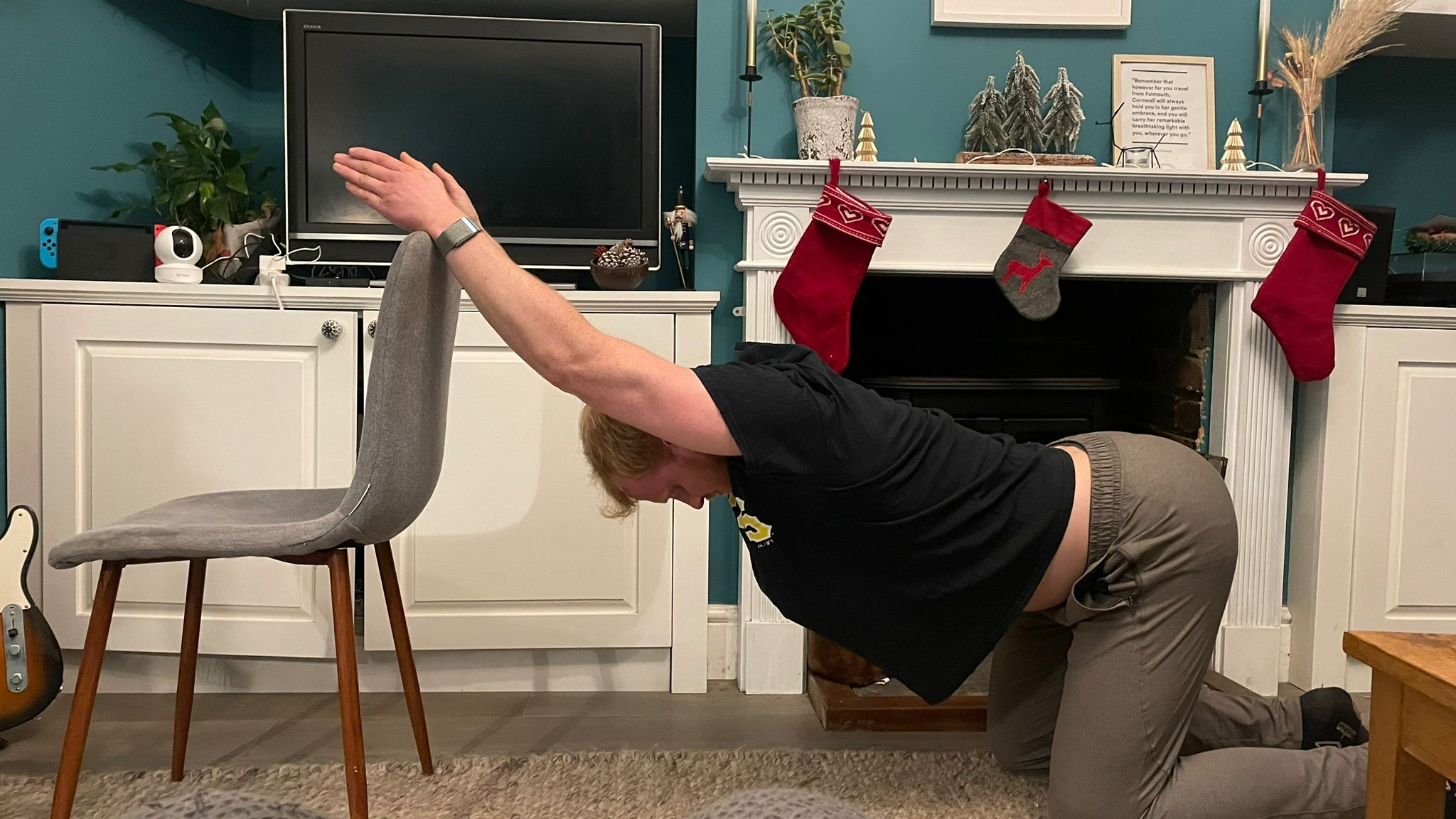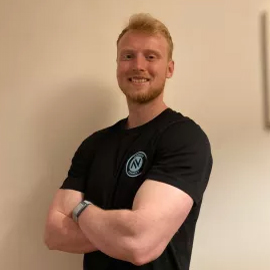I tried a physical therapist's four-move desk mobility routine and I felt the benefits straight away
It soothed my spine, eased my aching shoulders and left me feel more mobile


As a fitness writer, exercise is a big part of my life, but so is sitting down. I sit at my laptop while I'm working, I sit on the couch to unwind, and when I'm traveling I ping between car, bus, plane and train seats.
In spite of playing sports and doing regular strength training, my back, shoulders, neck and spine often feel stiff and tight. So I decided to seek out some stretches to help me feel fresher.
That's how I found Dr Adam McCluskey. He's a doctor of physical therapy who runs an Instagram account (ThePtInitiative) where he share tips, tricks and stretches to help followers "move better and live pain-free".
Among his posts was a four move "desk mobility routine" which requires nothing more than a chair to try. So I decided to give it a go and document the results.
How to do Dr Adam McCluskey's desk mobility routine
- Chair supported rotations 2x10 on each side
- Kneeling thoracic extension 2x12
- Assisted side bend stretch 2x15 on each side
- Seated figure four plus rotation 2x12 on each side
To see demonstrations of each move, watch the video below.
A post shared by Dr. Adam McCluskey PT, DPT (@theptinitiative)
A photo posted by on
My takeaways from trying this 'desk mobility routine'
1. It worked quickly
From start to finish, this routine took me about 10 minutes. That's certainly not long enough to undo years of muscle tightness, but I did notice some differences during and after the session.
Both the chair supported rotations and kneeling thoracic extensions offered a really enjoyable stretch in the front of my shoulders. By the second round of each move, my body felt warmer, my shoulder joint was more mobile and I was able to do the movements without any discomfort.
Start your week with achievable workout ideas, health tips and wellbeing advice in your inbox.
The fourth move also sent a welcome deep stretch through my hips and glutes, which are areas that can tighten and weaken with excessive sitting.
2. My spine felt looser afterwards
When we exercise, we normally try to keep our back straight. If we do bend our back during a workout, it's usually to flex it forwards for a sit-up. But that's not how we use our spine in everyday life.
Whether we're reaching to grab our bag from an overhead luggage rack or twisting to talk to someone sitting next to us, our back has to move in many different ways. This routine reflects that variety with different elongating, sideways bending and rotational motions.
By the end of the session my spine felt a lot looser. Each move offered a pleasant stretch in a different part of my torso, too. I felt the assisted side bend stretch along the side of my body, while the kneeling thoracic extension targeted the middle of my back.
3. It indentified tight spots
This routine really showed me where my tight spots are. The kneeling thoracic (mid-spine) extensions identified and eased a knot in the center of my back, while the chair supported rotations highlighted the tightness in the front of my shoulders.
I was also surprised to find just how much tighter my hips were on my left side than my right during the seated figure four position of the final move. I could easily grasp the edge of the chair's seat with my left hand when leaning over my right knee, but couldn't get close on the opposite side.
It's useful to identify these tight spots, as it means I can seek out stretches to target them in future mobility sessions.
4. I felt relaxed and ready to focus
My body was grateful for the extra movement, and I found taking 10 minutes away from my laptop left me feeling refreshed. But it wasn't just my muscles that felt less tense after this routine
After finishing it, I found it easier to focus at work—and write the piece you're reading now.
Would I try it again?
I would do this routine again. I finished it feeling looser in my spine and shoulders, and enjoyed taking 10 minutes out of my day for some relaxing stretching.
However, rather than regularly doing the routine in its entirety, I'm more likely to stash these moves in my back pocket for days when I want to break up time at my desk with a quick bit of movement.
I also liked how accessible it was—all you need is a chair and you're good to go. So if you work at a desk, I'd definitely recommend giving it a try.
Want more routines to help you feel more limber? Try these yoga stretches for beginners, or do some hip stretches to combat the damage done by sitting down all day.
Need a new mat to support your stretching regime? Have a look at our guide to the best yoga mats from 2023

Harry Bullmore is a Fitness Writer for Fit&Well and its sister site Coach, covering accessible home workouts, strength training session, and yoga routines. He joined the team from Hearst, where he reviewed products for Men's Health, Women's Health, and Runner's World. He is passionate about the physical and mental benefits of exercise, and splits his time between weightlifting, CrossFit, and gymnastics, which he does to build strength, boost his wellbeing, and have fun.
Harry is a NCTJ-qualified journalist, and has written for Vice, Learning Disability Today, and The Argus, where he was a crime, politics, and sports reporter for several UK regional and national newspapers.